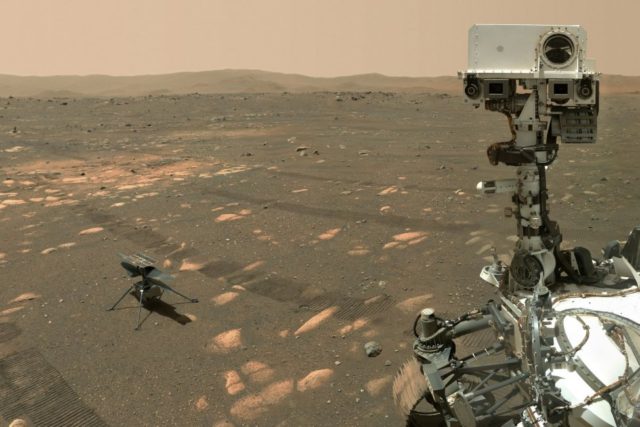Nov. 20 (UPI) — NASA’s Mars helicopter Ingenuity, originally expected to make five flights during 30 days on the Red Planet, has outlasted all projections for the length of its mission, which now is nearing seven months and a 16th flight.
NASA had planned that flight as early as Saturday. The rotorcraft and its cameras have helped the space agency plot the path of the Perseverance rover as it explores the Jezero Crater, drilling rock samples to hunt for signs of ancient life.
The helicopter’s longevity is even more remarkable because many of its parts are commercially available, or “off the shelf,” components for Earth-based drones or computers, Teddy Tzanetos, the NASA Ingenuity team lead, said in an interview.
“Any flight could be our last, frankly,” Tzanetos said. “So it won’t be a surprise to us if and when we see some of its parts fail. But that could be a fantastic discovery … a new data point for us to understand flight on another planet.”
#MarsHelicopter is preparing for Flight 16! No earlier than Nov. 20, it will attempt a 109-second flight at an altitude of 33 ft (10 meters). It’ll glide at 3 mph (1.5 m/s) and cover 380 ft (116 meters), while capturing photos to help out @NASAPersevere. https://t.co/W0OYnSrXYR pic.twitter.com/pWj78WRlPU- NASA JPL (@NASAJPL) November 17, 2021
Despite preparing for the end, though, Ingenuity’s remaining team of technicians and engineers sees no sign of failure, Tzanetos said. The helicopter landed on Mars with the Perseverance rover in February and flew for the first time in April.
“There’s no explicit part of the flight system that is showing us any signs of trouble, or aging, given that we’ve been flying for over six months,” he said. “Of course, we’re very pleased, and it’ll be extremely important … to understand how these parts age over time for future possible flight missions on Mars or other planets.”
NASA announced at the end of April that it would keep a small staff on the Ingenuity team to plan future flights. While such personnel add to overall mission cost of about $80 million, any increase will be minimal with the potential for valuable discoveries, Lori Glaze, director of NASA’s Planetary Science Division, said in April.
The aerial drone’s solar-powered batteries continue to perform well, Tzanetos said, adding, “There is no indication the batteries are showing any signs of wear and tear.”
Still, the team has updated Ingenuity’s flight software and plans to do so again, Tzanetos said. Rotors have had to spin faster as the helicopter encounters warmer temperatures during summer in Jezero Crater, for example.
“The best part is rolling with the punches and tweaking how it flies to accommodate what’s happening on Mars. It’s extremely exciting to go through that process,” he said.
One of Ingenuity’s off-the-shelf parts is an altimeter from Boulder, Colo.-based SparkFun Electronics, which is a device that measures altitude. Use of such commercially available electronics in the aerospace industry has grown in recent years, said Kirk Benell, chief technology officer at SparkFun.
NASA’s team for such missions “is the best on the planet … and Ingenuity adds to their history of bold missions with dramatic results,” Benell said.
NASA even created an open-source flight database online, f Prime, to help anyone in the world use similar hardware and software to create aerial drones, said Jahnell Pereira, chief business development officer at SparkFun.
“One of our creative technologists used it to build her own drone utilizing a similar hardware-software framework as Ingenuity,” Pereira said.
Meanwhile NASA is studying how flight software could be updated again to boost the altitude for future Ingenuity flights, currently limited to just under 40 feet, Tzanetos said.

COMMENTS
Please let us know if you're having issues with commenting.